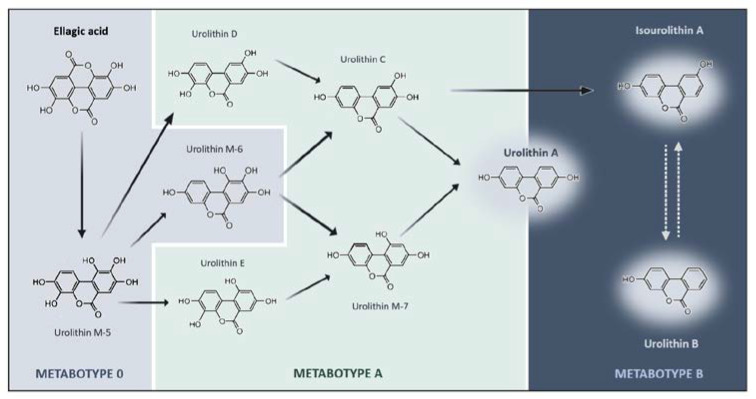Figure 1.
Schematic representation of ellagic acid catabolic pathway by colonic microbiota and the respective urolithin metabotypes. Ellagic Acid (EA) is metabolized into bioactive metabolites through lactone-ring cleavage, decarboxylation, and dihydroxylation reactions. Depending on the individual’s microbiota composition, EA can be metabolized into distinct types of urolithins. Such differences can be stratified into three metabotypes (A, B, and 0), depicted by specific color codes. Metabotype 0 (gray) does not produce the final urolithins at least in detectable concentrations. Metabotype A (yellow) is characterized by the production of urolithin A and its conjugates. Metabotype B (green) is characterized by the production of urolithin B, urolithin A, and isourolithin A. The chemical structures represented indicate the intermediates and final metabolites that are produced along the different pathways of ellagic acid metabolism.

